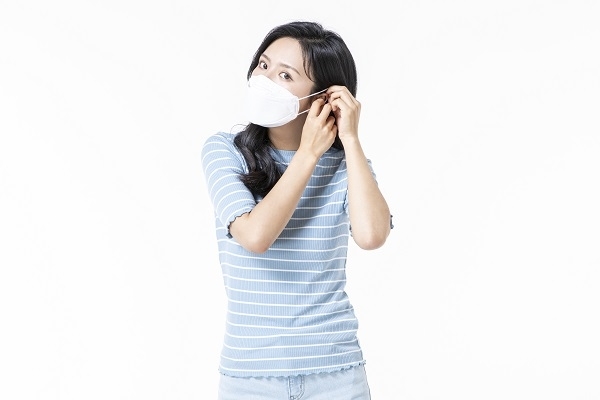
Due to COVID-19, living indoors and wearing a mask have become a part of our daily life. As it is already a dry season, there have been more people complaining about the rising itchiness and dryness because of wearing masks in such an environment today. How should we solve these increasing skin problems arising from wearing face masks?
■10 minutes of ventilation at a clean location
Because we are told that indoor areas are more dangerous than outdoor areas, we naturally wear masks everywhere we go. However, in no time, we collect moisture on the face as sweat gathers around our mouth and nose. When we take off the mask at home after hours of patience, there are many times in which the particular area of our face has become red and itchy.
No matter how much wearing the mask is important, putting up with it is not the optimal solution. This is because if the skin is covered and enclosed for a long time, germ proliferation increases and can lead to multiple skin problems.
Wearing a mask for a long time without ventilation is even more dangerous for individuals who already have a skin disease or a sensitive skin. According to Professor Lee Woon-ha from Inje University Sanggye Paik Hospital Department of Dermatology, “Individuals with atopic dermatitis who have reduced antibacterial capability and individuals with chronic inflammation around the nose and mouth may experience worsened symptoms due to germ proliferation and enclosed skin environment.” Moreover, she also explained, “this environment can also be critically harmful to individuals with sensitive skin which develops skin troubles with even a slight irritation as there is a higher risk of an occurrence of irritant contact dermatitis.”
In order to prevent these problems, it is optimal to continuously replace the mask before it gets moist. However, in the current situation in which masks have become precious and rare, such action is not an easy action to take. As a result, the second-best alternative is to provide enough ventilation by taking off the mask for around 10 minutes every hour at a safe and hygienic location free from contamination risk.
Additionally, you should not dry the mask with a hairdryer in order to get rid of the moisture or disinfect it with alcohol. Health masks recommended during the COVID-19 pandemic are equipped with filters with static properties that can hold onto external foreign substances such as fine dust. However, when the mask is exposed to moisture, this function is reduced.

■Apply enough moisturizer after carefully washing your face
After returning home, take off the mask completely, wash your face carefully with lukewarm water and hypoallergenic low pH cleanser, and apply enough moisturizer on your skin.
Children who are too young to carry out proper skin moisturization need the help of adults. When applying moisturizers, it is good to use the general lotion, cream, and essence in order. If you finish the process with cream and essence with high oil content after applying lotion with high moisture content first, you can increase the moisturizing effect by containing the moisture.
For moisturizers, applying them twice a day in the morning and afternoon is appropriate but if your child has a skin that easily becomes dry, we recommend you to apply moisturizer around four times a day (morning, lunch, dinner, and before sleeping).
"If the child’s skin becomes red and the itchiness worsens even after enough moisturization, an herbal ointment which reduces the heat of the skin can also help greatly,” Director Lee Byung-ho from Busan Seomyun Hamsoa Oriental Clinic stated. Furthermore, he added, “Among them, Jaungo is the representative ointment which can make improvements in skin injuries, eczema, and atopic dermatitis.”


